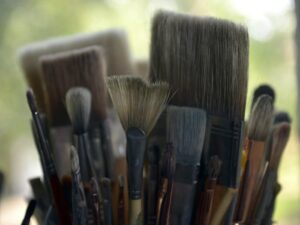
Fine art brushes in the studio of James Courtenay James. Photo by Billy Weeks
[gdlr_image_link type=”image” image_url=”” link_url=”” alt=”” target=”_blank”]Chattanooga. In a Snap Chat world where an image is here today and gone tomorrow, an investment in an heirloom portrait feels like the new counter culture. Once a standard investment found in any fine home, portraits quickly grew out of sight and out of mind—replaced by a clutter of the candid souvenirs of time. Technology had us all at ‘cheese!’
The Kodak Instamatic lived up to its name; the Kodak Moment created our shrines. In our lifetime, the old oil profiles were shuffled to the estate sale, museum, or attic. These same pressures from technology also influenced university art departments, shifting the syllabus to industry demands for graphic design and Photoshop. Many art students began graduating more than shy of the 10,000 hours it is touted to master any fine art skill. Some art students now graduate without having the experience of ‘drawing from life,’ mixing oils, or prepping a canvas.
A highly designed world and our blog templates provide the tools for most of us to dabble in art with satisfaction. The fine arts generalist with a portable easel and box of brushes was not nearly as portable as a laptop and mouse. The discipline-based skills needed to draw a portrait from life (or from an intimate mirror reflection) were no longer required subjects, but became ‘electives.’
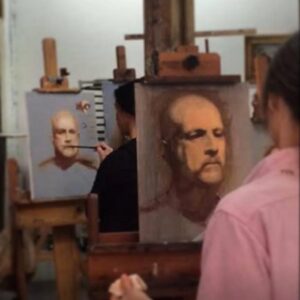
Townsend Atelier offers a rare opportunity for artists to develop expertise with weekly ‘painting from life’ workshops in Chattanooga. In this sitting, musician Bob Stagner, offers up his life to be interpreted many ways in oil by students of Chris Saper. Photo courtesy of Townsend Atelier.
The changes at the university have actually provided an opening to alternative ways of becoming a master. The apprentice approach of the Atelier movement has stunning results. The work that comes from the atelier movement reminds us that something has been missing, a vitality in the work worthy of being insured, something worthy of setting aside from the estate sale as ‘family inheritance.’
Portrait artists are finding a way to deepen their skills through the atelier classes to create a believable eye and reconnect with a customer base. Such portrait artists achieve excellence, one sitting at a time. The atelier communities of artists in our region are wonderfully inter-generational, with some participants enrolled in art schools, but most learning important techniques through the old disciplines and mentors.
Universities remain a valuable next step for anyone aspiring to become an artist, but Ateliers are full of lifetime learners. If you are looking to purchase a once in a lifetime portrait, we suggest you choose among such lifetime learners. Otherwise, you might be disappointed.
Meet Susie McGinness with Portraits South
Susie McGinness has a portfolio of life-time learners she likes to share with clients as a seasoned broker for Portraits South. Her company is based in Raleigh, North Carolina, and she calls Lookout Mountain, Tennessee, home. Some of the artists she represents may live down the street and some live across the pond in London. Her portfolio is wide-ranging, in other words, but her clients are from our region and there’s no more personable Southern guide.
Think of Susie McGinness as a ‘matchmaker’ who works both sides of the equation to find compatibility and manage expectations. It’s an important job because portrait options vary widely and can be completed as a pastel, oil, watercolor, or pen and ink. Options might include a formal head-and-collar profile or a gathering of several playful siblings in the backyard. One of the daunting aspects of commissioning an heirloom portrait before the kids become tweens or an aging parent passes, is likely knowing ‘where to begin?’ Our answer is Portraits South. The main reasons we encourage such a conversation, is that Portraits South artists come with recent references that you can speak with directly.
“When you witness a portrait and cringe but can’t exactly explain why,
it is likely because of poorly executed dimension, which makes the
composition flat.” —Susie McGinness
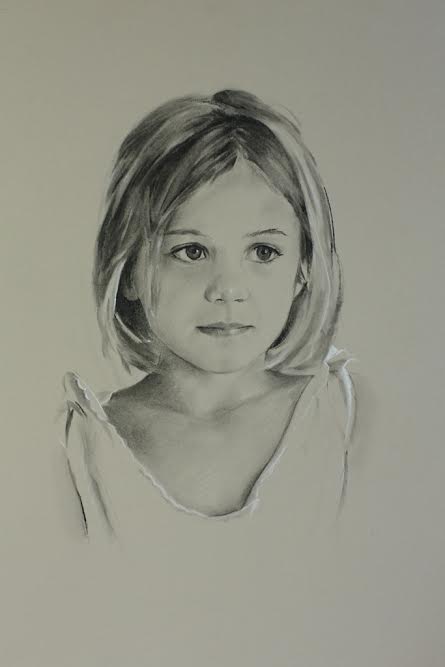
Portrait South broker Susie McGinness represents artist Rob Beckett. His contemporary pen and ink portraits offer clean lines and reveal his expertise.
Susie can show you samples of styles from the traditional to contemporary, and in various mediums you may not be aware exist. A Bart Lindstrom oil with sepia tones may illustrate your idea of ‘timeless,’ or a Jenny Lathem detailed pastel of a young girl in a dress gathered at the waist may evoke the concept of ‘classic’ for your family.
Portrait offerings do well in contemporary settings, and Portraits South can advise you on how framing and materials can work with your personal tastes and lifestyle. Portraits South also works with clients on various price points—$3,000 to $10,000 depending on the detail and number of people depicted—and she can quickly help a client narrow down a selection after listening to their heart’s desire. Susie works with clients all across Tennessee.
Keep in mind portraits are rarely displayed in fine art galleries among the collage assemblages and landscapes, because the work is custom, intimate even. So portrait artists’ names may not be as well-known even among gallery circles. However, if you already collect art and have a relationship with a trusted gallery, they can likely connect you with portrait artists they may represent.
In Nashville, perhaps speak with Anne Brown with The Arts Company, a gallery that’s been in the business for twenty years, or Haynes Gallery. In Chattanooga, River Gallery in the Bluff View Art District represents our featured portrait artist James Courtenay James.
Beyond a broker or gallery agent, the ateliers are a source for finding the masters, or becoming one. Susie McGinness agrees that continual study from life, such that you can generally only find through an atelier setting, has nurtured the finest artists in her portfolio. The difference, she underscores, between a master and an emerging artist (or over-rated amateur), can be noted quickly by looking at two things: the eyes and the backdrop.
“The eyes reveal the talent and skill of the artist, always,” says Susie. “But also, pay attention to the background of a subject, and see if it is competing too strongly. Sometimes the setting gets more attention because the artist’s strength may not actually be in portrait work, but landscape.”
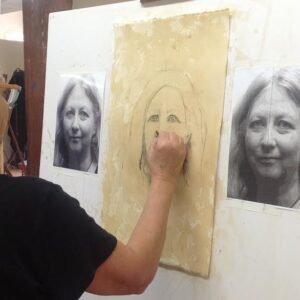
Artist Tam Salter completes a self-portrait study in a Townsend Atelier workshop led by Cindy Procious. Working from photographs enhances the process and minimizes the discomfort of a portrait experience for the subject.
“The light and dark nuance a painter brings to a face allows for dimension to appear on the one-dimensional canvas. Dimension and proportion, in other words, also reveal a skill level. “When you witness a portrait and cringe but can’t exactly explain why,” said Susie, “it is likely because of poorly executed dimension, which makes the composition flat; sometimes the hands and arms are slightly out of proportion making us want to look away.
“My artists, and any master artist, share a common denominator,” said Susie. “They make you stop and look into the painting with care, enjoying such a pause over and over for years and years.”
TOWNSEND ATELIER: A Community of Artists
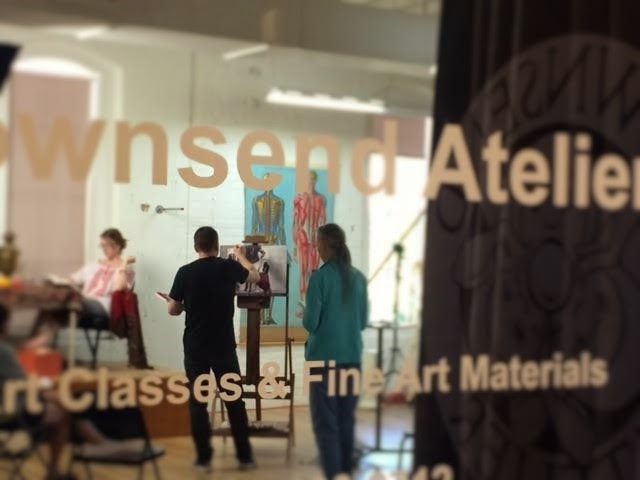
Townsend Atelier has been at the forefront of the Atelier Movement in the Southeast. The center offers classes, special events, and a distinct shop for fine art materials in the Arts Building in Chattanooga.
A strong atelier can introduce you to a regional community of masters. Stan and Peggy Wood Townsend have been at the center of our region’s atelier movement and recently moved to The Arts Building in Chattanooga. They share the renovated building and synergies with organizations including Arts Build, SoundCorps, and The Southern Lit Alliance.
Townsend Atelier offers regular workshops and lectures by portrait masters such as Chris Saper, Cindy Procious, Seth Haverkamp, and Mia Bergeron. Classes fill quickly and guests often travel far to find such opportunities outside university enrollment.
Townsend Atelier is a hive. Beyond a full slate of master classes, there’s a weekly Thursday evening three-hour ‘drawing from life’ exercise that is well attended. A monthly gathering allows work of all levels and genres to be reviewed by mentors.
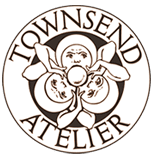
Visit townsendatelier.com to shop for fine quality paints, brushes, and compounds used in restoration and sculpture. Or visit their atelier and shop in Chattanooga.
In addition, Townsend Atelier is one of the few suppliers in the country that curate the kind of archival-level fine art materials that all commissions demand. When it comes to an heirloom, the artist must select products and surfaces that stand up through time. Product knowledge is just as important a skill as the strokes of a brush. Townsend Atelier educates artists on techniques, but also raw materials. You can purchase supplies online or visit their shop at the atelier.
When you enter the atelier you see a chart that you might expect to see in a physiology classroom or doctor’s office. Here it serves as a reminder that the portrait painter must know the nuance of the bones in an arm, as if they practice sports medicine.
NARRATIVE PORTRAITS by James Courtenay James
James Courtenay James brings mastery to portraits. His work in oils has been informed through the Townsend Atelier community. He is represented by River Gallery in Chattanooga’s Arts District near the Hunter Museum of American Art and primarily works in oil on

Portrait artist James Courtenay James is represented by River Gallery in Chattanooga. Photo by Billy Weeks
commission. He has led workshops at Townsend Atelier but always remains a student, connecting with peers for the weekly drawing group. He describes each of these experiences as ‘invaluable.’
Following a career in commercial graphic design and illustration, Courtenay has shifted his focus solely to studio arts.
Painting with oils has captured his imagination. “Oils are rich and create works that are translucent. They also dry slowly and allow you to work with them longer, turning a smear into a lip or working at the shadows.”
Courtenay said painting is a lot like chess—you plan on what you are going to do several steps ahead. Courtenay may spend a week focused on painting clasped hands over and over in varying degrees of light. He might seem obsessed, but only to someone who doesn’t recognize the skill required for good portraiture. Certainly when you look at a portrait by this artist, gesture is a compelling strength, a signature element.
“We recognize objects and figures every day, but we do not observe these in great detail,” says Courtenay. “Portrait artists take this to near meditation.” He takes his sketchbook everywhere, the coffee shop, the park, the atelier. “Most visual art is about mastering observation.”
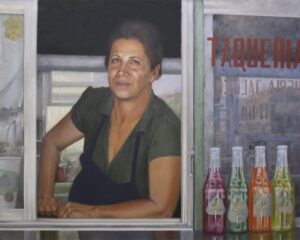
Narrative portrait of a favorite Southside Chattanooga Taqueria Owner by James Courtenay James.
“As a culture we are accustomed to manufactured things that elevate perfection. However, we remain drawn to handmade items because they are more interesting, more insightful of what it means to be human.” —James Courtenay James
The figure has always been that challenging effort he continues to explore, though he has painted en plein aire. “Painting trees as the focus now feels like an entirely different vocabulary and conversation.”

Portrait of a portrait painter, Mia Bergeuron, by James Courtenay James
In his portrait of a portrait artist, Courtenay’s interpretation of his Chattanooga atelier peer Mia Bergeron expresses itself with gesture. The mood of his portrait of Mia is captured in the position of her arm as a gesture of pause and reflection. His mastery of the play of light reveals someone actively engaged but also a private person. It’s a particular moment, and we are witness through the portrait.
Courtenay’s work is an example of a type of portraiture gaining popularity: narrative portrait. Each image alludes to a setting, finding that delicate balance that keeps the focus on the person.
Note the more subtle window Courtenay includes behind Mia Bergeron that serves as metaphor for this artist/subject who is looking outward at the world and through a framed focus. “Framing paintings actually comes from the concept of the window,” offers Courtenay. “The Dutch had curio cabinets and during the Italian Renaissance an aesthetic ran throughout a building, so that the church architecture itself served as a frame.” Similarly, Courtenay’s large painting of a woman draped with a scarf illustrates something important and vital to her being that a head and collar portrait would crop.
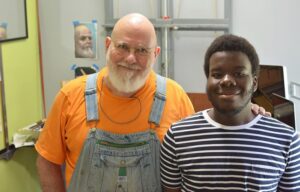
James Courtenay James gives back to his community as a mentor to a talented East Hamilton School art student Kobe Rasheed Smith.
Narrative portraiture is where metaphor and subject intertwine with a careful approach as to avoid cliché. A narrative portrait pulls in the viewer, even if the subject is anonymous. Looking at a James Courtenay James painting we are moved to want to better know the person he paints, to see them as a whole person worth knowing.
“Building an art object that will endure is essential,” said Courtenay. “We now have more oil colors and we have learned so much from the past and its failure of materials. We know to avoid those materials and practices that have failed to endure the test of time. Scientific research and technology allows us to better construct an heirloom to avoid cracking or fading.” Courtenay paints exclusively on composite aluminum panels rather than stretched canvas. The painting is both stable and lightweight; it will not warp. This method is drawn from the endurance of exterior metal signs.
Ultimately Courtenay, and other painters, are chasing an element that is always changing: light. “My work attempts to capture a sense of the light in a space and how the person responds to that light,” he said.
Portrait painting is having a revival along with other areas of fine art and craft. “As a culture we are
accustomed to manufactured things that elevate perfection. However, we remain drawn to handmade items because they are more interesting, more insightful of what it means to be human.”
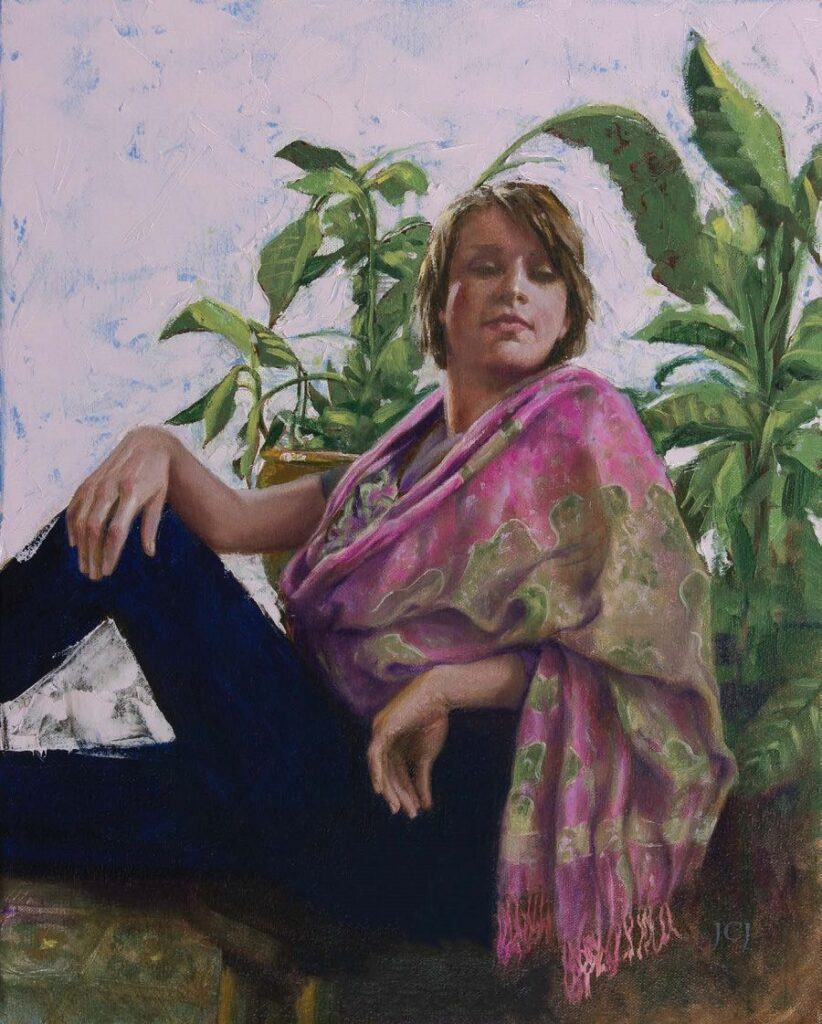
Contemporary narrative portraiture in oil by James Courtenay James of Chattanooga.

Another wonderful example of ‘narrative’ portraiture by James Courtenay James. To view his online portfolio and contact information, visit jcjfinearts.com.
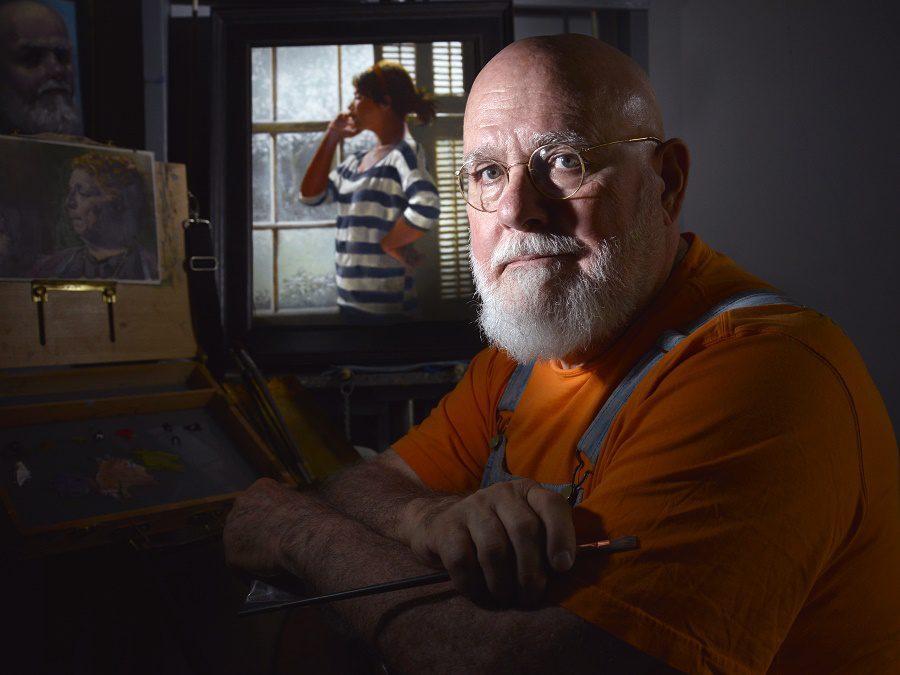
Portrait of the artist James Courtenay James in his studio. Photograph by Billy Weeks for Nashville Interiors.
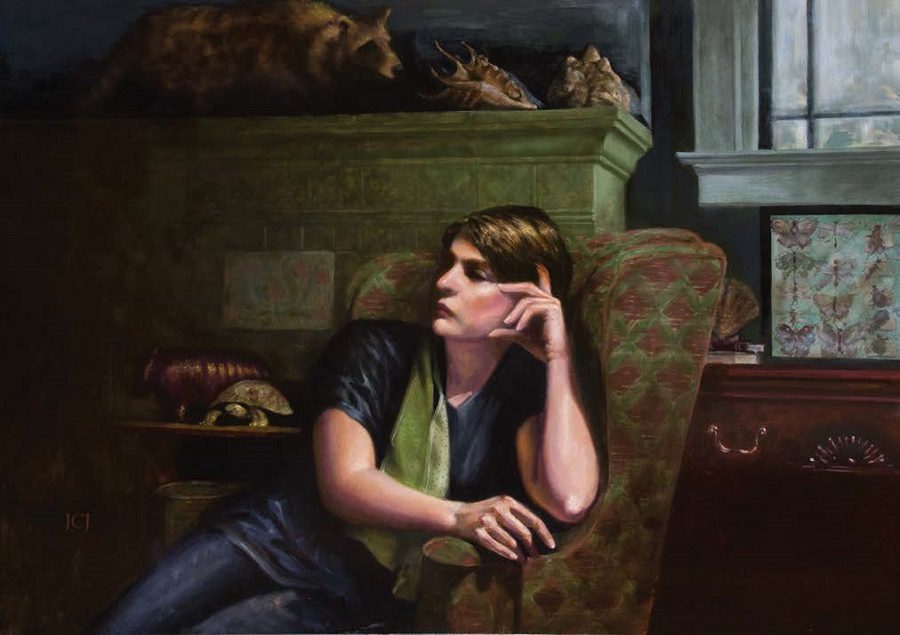
Though wonderfully detailed, the narrative context to this portrait by James Courtenay James never dominates the main subject. The use of contrast is stunning and the gestures of the hands communicates an interesting mood, perhaps a pensiveness.

Cindy Procious recently led a workshop on charcoal portraits at Townsend Atelier. A selfportrait by the artist is shown. In addition to portraiture, Cindy is an American master of the still life, of realism. To view Cindy’s work online and contact her about commissions, visit cindyprocious.com. Photo courtesy of Townsend Atelier.
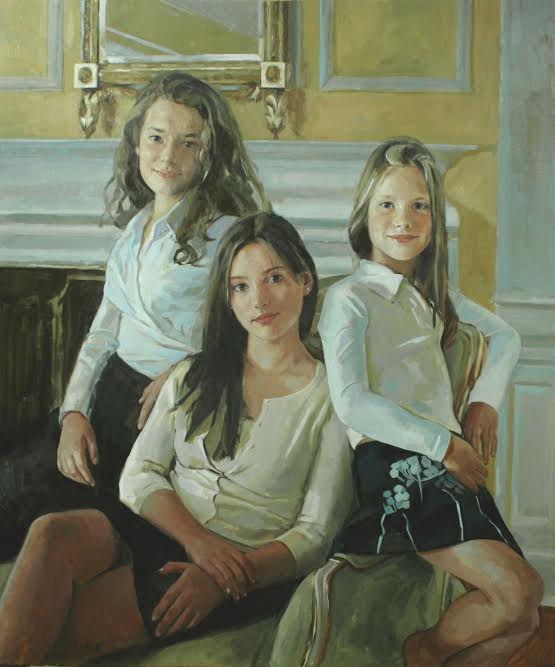
Rob Beckett’s narrative portrait of three sisters is a fine example of contemporary narrative portraiture available for commission through Portraits South. Contact broker Susie McGinness to view portfolios of this and other artists who specialize in portraiture. Photo courtesy of Portraits South.
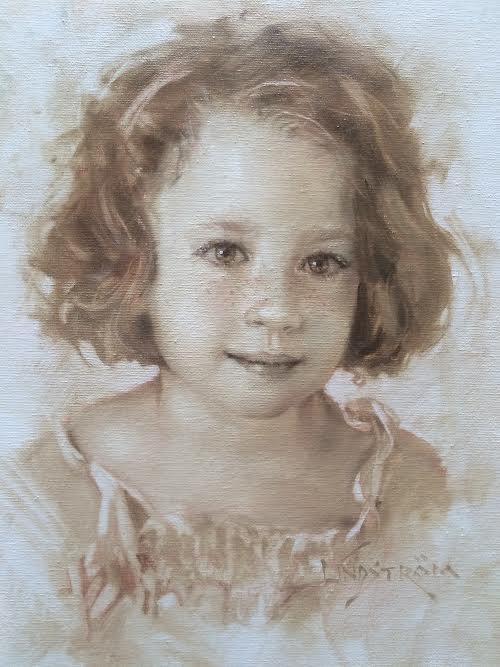
Bart Lindstrom’s oil portrait offers a rich monochromatic effect. Contact broker Susie McGinness with Portraits South to view portfolios of this and other artists.
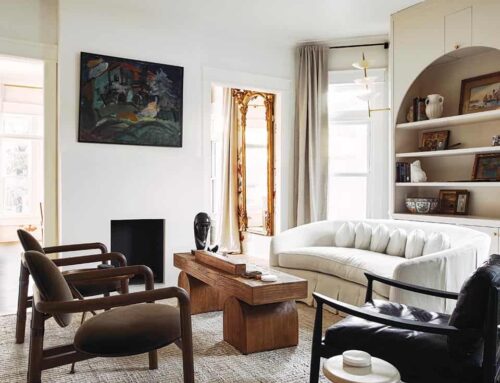
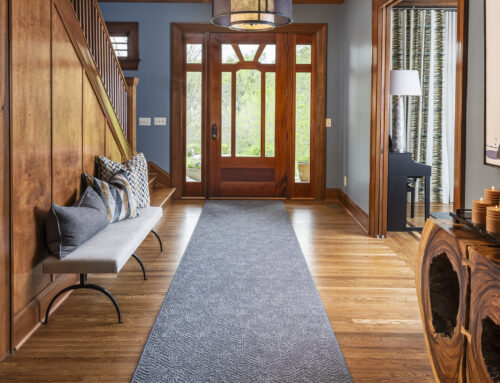
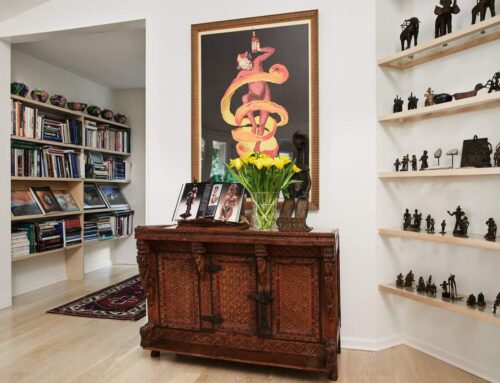


Leave A Comment
You must be logged in to post a comment.